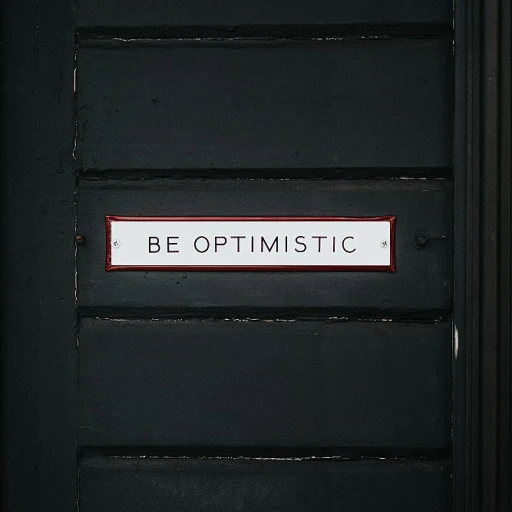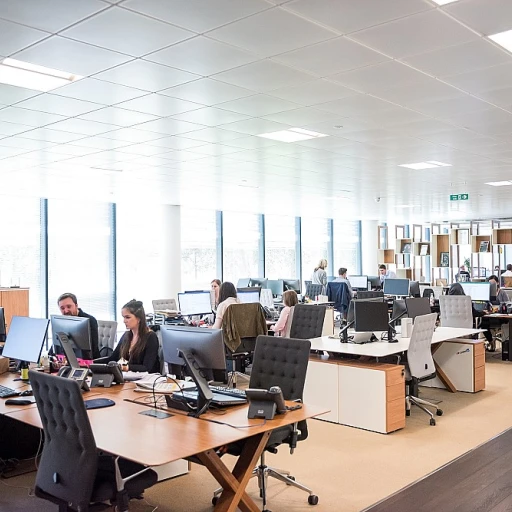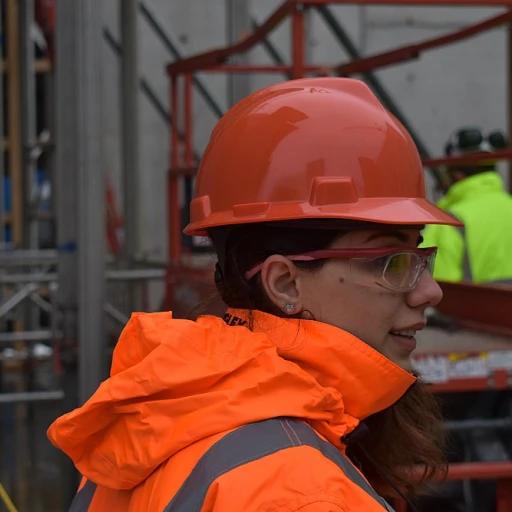
Understanding Human Resources Forecasting
Mastering the Art of Human Resources Forecasting
Human Resources Forecasting is a pivotal element of comprehensive workforce planning, empowering businesses to anticipate future staffing needs and align them with organizational goals. By leveraging data-driven methods, HR professionals can better understand their current workforce while predicting the supply and demand for talent. Strategic forecasting helps to mitigate risks, optimize resources, and ensure that an organization is well-prepared to meet future business demands.
Analyzing Historical Data and Trends
At the heart of effective forecasting lies the analysis of historical data. This process involves examining past staffing trends, employee turnover rates, and productivity levels to forecast future workforce requirements. Trend analysis allows HR teams to identify patterns in employee behavior, staffing requirements, and business cycles, equipping them with valuable insights into the organization's talent needs.
Relying on Scenario Planning
Scenario planning is a dynamic component of forecasting that prepares businesses for various potential futures. By creating hypothetical scenarios, organizations can examine how different factors, such as economic shifts, technological advancements, or changes in labor laws, might influence workforce demand and supply. This practice helps in identifying gaps and developing contingency plans, ensuring that the workforce planning process is resilient and adaptable.
Furthermore, understanding and integrating remote work dynamics is becoming increasingly important in the modern workplace, requiring adjustments in forecasting strategies.
Collaboration and Continuous Improvement
Collaboration among HR departments, team leaders, and business units is essential for refining the forecasting process. Input from diverse stakeholders enriches the analysis, contributes to more accurate forecasts, and aligns workforce strategies with long-term business goals. Continuous improvement, driven by regular feedback and advancements in predictive analytics, ensures that the forecasting process remains effective and aligned with industry best practices.
By mastering the art of human resources forecasting, companies can position themselves strategically to fulfill their talent needs, supporting employee engagement and driving business success in an ever-changing environment.
Key Metrics for Effective Forecasting
Crucial Metrics to Consider
Effective workforce forecasting relies heavily on identifying critical metrics that align with your business goals. Key metrics in forecasting include analyzing supply and demand within the current workforce, understanding future staffing needs, and measuring the candidate experience.
Evaluating Historical Data
One of the paramount steps in the forecasting process is the evaluation of historical data. This analysis provides insights into past trends and demand forecasting patterns that help predict future scenarios. By leveraging data driven approaches, businesses can engage in more accurate workforce planning.
Gap Analysis: Understanding Disparities
Conducting a gap analysis is vital to identify discrepancies between the current workforce capabilities and the future needs of the business. This analysis will help you align forecasting strategies with business objectives. The insights gained from gap analysis are instrumental in tailoring talent acquisition strategies.
Incorporating Trend Analysis
Trend analysis is another critical element that facilitates comprehensive workforce forecasting. By observing industry trends and employee behaviors over time, organizations can better anticipate shifts in supply demand. This foresight is essential in preparing the organization for future changes.
Implementing Predictive Analytics
To truly enhance your forecasting capabilities, integrating predictive analytics tools can significantly improve your process. Predictive analytics offers a refined lens through which to assess potential outcomes and strategic adjustments. To explore more about these advanced techniques, visit exploring the future of HR analytics for deeper insights.
Tools and Technologies in HR Forecasting
Leveraging Tools and Technologies to Amplify HR Forecasting
In the contemporary business landscape, the integration of technology into human resource forecasting can significantly enhance workforce planning efforts. As companies strive to align their workforce planning with future business goals, selecting the right tools and technologies becomes crucial for effective demand forecasting. Technological advancements in predictive analytics enable organizations to delve into historical data to predict future staffing requirements. This data-driven approach can assist HR professionals in performing comprehensive analysis, thereby understanding the future supply and demand for talent. For instance, workforce forecasting tools often incorporate trend analysis and scenario planning features, which provide insights into potential staffing gaps. These insights are essential when crafting strategies that align closely with the company's business goals and forecasting methods. Moreover, the utilization of advanced analytics software facilitates efficient gap analysis, which is pivotal in identifying any discrepancies between the current workforce and future staffing needs. By harnessing these tools, organizations can ensure a seamless staffing process, promoting a harmonious balance between human resource supply and demand. The integration of technology in HR forecasting not only aids in talent acquisition but also enhances the candidate experience by streamlining processes. Tools that offer robust data analytics capabilities will help anticipate future trends and adapt strategies accordingly, driving more informed and strategic decision-making in workforce planning. For organizations aiming to optimize their forecasting process, understanding what makes a workplace truly intelligent is imperative. By leveraging these technologies, businesses can better align their workforce strategies with predictive insights, ultimately fostering a more responsive and agile organizational structure. For more insights on intelligent workplaces, consider exploring what makes a workplace truly intelligent, which can provide deeper understanding into integrating smart tools and methodologies in HR forecasting.Challenges in Forecasting Human Resources
Overcoming Hurdles in Human Resources Forecasting
In the dynamic realm of human resources, forecasting is an invaluable tool that equips organizations with the predictive insights necessary for effective workforce planning. However, the path to accurate and actionable forecasts is fraught with challenges. Understanding and navigating these obstacles is essential for optimizing the forecasting process and aligning it with business goals. One pressing challenge in HR forecasting is ensuring the accuracy of data. For forecasts to truly reflect the future landscape, businesses must rely on high-quality, up-to-date data. This involves regularly updating workforce data and ensuring that external factors impacting demand and supply, such as economic trends or market dynamics, are considered.Data Management and Integration
Managing vast amounts of data can be daunting. Integrating diverse datasets from various human resources systems or external sources is often complex, which can lead to inconsistencies. Employing robust data management practices and powerful data analytics tools can mitigate these issues, allowing for a more cohesive and comprehensive analysis.Unpredictable Market Trends
Another consideration is the unpredictability of market trends. The business environment is ever-changing, which can make predicting future staffing needs challenging. Incorporating scenario planning and demand forecasting methods can provide organizations with a range of outcomes to prepare for different possibilities.Balancing Supply and Demand
Effectively managing the supply and demand of talent is crucial in achieving forecasting accuracy. Conducting regular gap analyses can identify discrepancies between current workforce capabilities and future talent needs. This enables proactive planning in talent acquisition and development, ensuring that organizations remain agile and responsive.Time Constraints and Resource Limitations
Time and resource limitations often impact the comprehensiveness of forecasts. With the right forecasting strategies, businesses can prioritize essential data and analysis processes to ensure timely decision-making. Leveraging technologies such as predictive analytics can streamline the forecasting process, providing valuable insights with greater efficiency. In overcoming these challenges, organizations can enhance their workforce planning efforts, ultimately fostering a more resilient and adaptable workforce. Addressing these issues head-on will help businesses not only predict future requirements but also craft strategies that effectively respond to evolving market needs.Strategies for Successful Implementation
Leveraging HR Forecasting for Strategic Success
To effectively integrate forecasting into workforce planning, organizations should consider a variety of strategies designed to align their talent management with business goals. Below are some key approaches that can help drive successful implementation:- Define Clear Goals: Begin with a comprehensive understanding of your business goals and objectives. This will help ensure that the workforce forecasting efforts are strategically aligned with the overall direction of the company. Understanding the nuances of these goals allows for precise demand forecasting.
- Embrace Data-Driven Decision-Making: Utilize predictive analytics and trend analysis to guide your forecasting process. By analyzing historical data and current workforce dynamics, HR teams can better anticipate future staffing needs and bridge any gaps between supply and demand.
- Invest in Training and Development: Equip HR professionals with the necessary skills and knowledge of forecasting methods, tools, and technologies. This expertise is crucial in refining the forecasting process and improving the accuracy of workforce predictions.
- Conduct Regular Gap Analysis: Regularly assess the disparity between existing talent supply and future demand. This analysis will help pinpoint areas requiring strategic intervention, such as talent acquisition or workforce development initiatives.
- Foster a Culture of Collaboration: Encourage cross-departmental collaboration to enhance workforce planning. By involving various teams in the forecasting process, organizations can gather diverse insights, leading to a more robust and comprehensive understanding of their talent landscape.
- Scenario Planning: Develop multiple scenarios based on different business environments and future staffing requirements. This approach allows HR teams to prepare for various outcomes and adjust strategies accordingly, ensuring a flexible and resilient workforce planning process.
- Regular Review and Adjustments: Continuously review and refine the forecasting process to keep pace with changing business conditions and workforce trends. This dynamic approach ensures the alignment of HR strategies with evolving external and internal demands.
Case Studies and Real-World Applications
Real-World HR Forecasting Applications in Companies
Several organizations have successfully leveraged human resources forecasting to enhance their workforce planning and meet their business goals. These real-world examples illustrate how effective forecasting processes can align a company's talent acquisition and supply-demand needs with its strategic aims.
Technology Firms and Predictive Analytics
In rapidly shifting industries like technology, companies have turned to predictive analytics to understand workforce trends and future staffing requirements. By utilizing historical data and trends, these businesses can engage in data-driven workforce forecasting. This approach allows technology firms to preemptively manage changes in talent demand and ensure a smooth continuity of operations.
Retail Sector's Use of Scenario Planning
Retail companies often face fluctuating staffing needs due to seasonal changes and market demands. By integrating scenario planning into their forecasting process, these businesses can predict future staffing demands more accurately. Retailers utilize demand forecasting techniques to modulate their employee numbers efficiently, ensuring they meet customer demand during peak seasons without overextending during off-peak times.
Healthcare Industry's Gap Analysis for Future Readiness
The healthcare industry, with its critical need for skilled personnel, relies heavily on gap analysis as part of its human resources forecasting. This approach helps healthcare providers identify gaps between their current workforce supply and future demand. By understanding these gaps, they can develop strategic plans for talent acquisition and retention to maintain the necessary level of expertise and efficiency in delivering healthcare services.
Manufacturing and Trend Analysis for Workforce Stability
Manufacturing firms benefit from employing trend analysis within their workforce planning efforts. By evaluating data on historical workforce trends and anticipated future changes, manufacturing leaders can craft strategies that align workforce supply with production demands. This proactive analysis helps stabilize workforce dynamics, aligning staffing levels with production schedules and business growth objectives.












